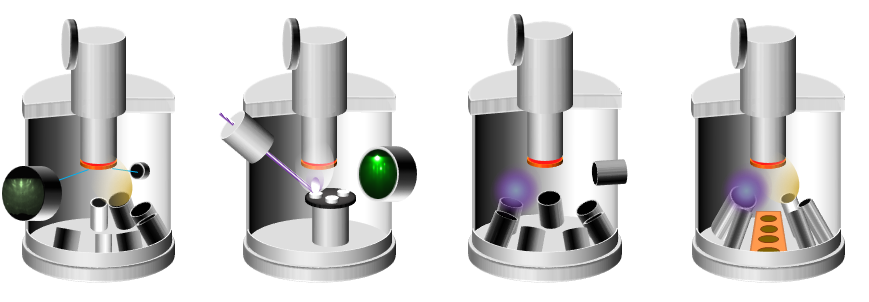Materials
Optimised materials
Materials from the Royce Deposition System are available to academia and industry. The system is designed to be flexible, with different types of materials and a range of growth techniques, allowing us to build complex heterostructures with novel interfaces. Within the Condensed Matter Group we have a wealth of experience in thin film growth and dedicated experimental officers who can provide fully characterised samples.
Below are examples of thin film materials that have been optimised in the system.
Bismuth telluride
Topological-organic interfaces
Epitaxial platinum
Fullerenes
Textured sputtered films
Strontium ruthenate
Strontium titanate
Perpendicular magnetic anisotropy
Bismuth ferrite
Magnetic multilayers for skymionic devices
Epitaxial niobium
Superconducting and ferromagnetic devices
Materials by chamber

Topological Materials MBE
Effusion cells:
In, Ge, Se, Bi, Sn
Cracker cells:
Sb, Te
Pulsed Laser Deposition
Targets include:
SrTiO3, SrRuO3, BiFeO3, YIG, ITO
Sputtering
Target include:
Au, Pt, Ir, Ru,
Nb, Ta,
Co, Co62B32, CoFe,
YIG
Organics
Effusion cell:
MnPc, C60, H2Pc
E-beam evaporator:
Pt, Co, Py, Au
Sputter target:
Cu
Publications
Strain-coupled domains in BaTiO3(111)-CoFeB heterostructures
Effects of structural ordering on infrared active vibrations within Bi2(Te(1-x)Se(x))3
Observation of a molecular muonium polaron and its application to probing magnetic and electronic states
M. Rogers, T. Prokscha, G. Teobaldi, Leandro Liborio, S. Sturniolo, E. Poli, D. Jochym, R. Stewart, M. Flokstra, S. Lee, M. Ali, B. J. Hickey, T. Moorsom, and O. Cespedes
Pt and CoB trilayer Josephson π junctions with perpendicular magnetic anisotropy
N. Satchell, T. Mitchell, P. M. Shepley, E. Darwin, B. J. Hickey & G. Burnell
Spin-valve Josephson junctions with perpendicular magnetic anisotropy for cryogenic memory
N. Satchell, P. M. Shepley, M. Algarni, M. Vaughan, E. Darwin, M. Ali, M. C. Rosamond, L. Chen, E. H. Linfield, B. J. Hickey, and G. Burnell
